 |
||||
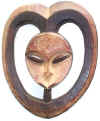 |
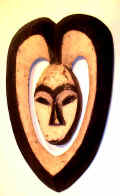 |
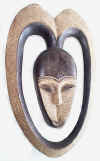 |
||
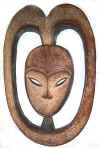 |
 |
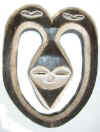 |
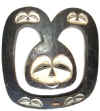 |
|
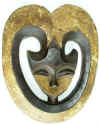 |
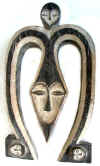 |
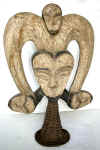 |
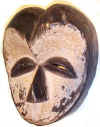 |
|
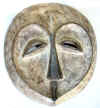 |
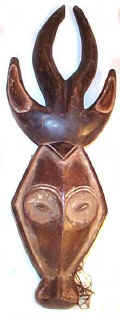 |
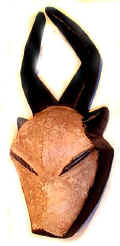 |
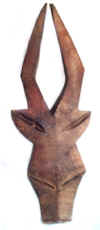 |
|
TRIBAL AFRICAN ART
KWELE (BAKWELE, BEKWIL, EBAA, KOUELE)
Cameroon, Gabon, Republic of the Congo
The Kwele
occupy a great forest region on the borders of Gabon, Cameroon and the Republic of Congo.
Their village communities comprised a number of lineages and were governed in the usual
way for "headless" equatorial societies, that is in a diffuse and more or less
informal manner. The Kwele believe that unexplained deaths, epidemic smallpox,
and other mysterious threats to the well-being of individuals or the community are caused
by witchcraft. Witches are believed to live in male or female hosts, from which they
emerge at night to feed upon the internal organs of their victims. The antidote to
witchcraft is the beete ritual, which includes masked performances. The beete
cult reinforces unity and maintains social order. The beete ritual, which
lasted for a week, would open with the departure of men into the forest to hunt antelope,
whose flesh, seasoned with medicines, had to be eaten at a meal at the closing ceremony.
During the hunt, women and children stayed in the village; after one or two days, ekuk
masks would “leave” the forest, enter the village, and invite the people to come
dance and sing. Ekuk means both “protective forest spirit” and
“children of beete.” It displays a flat surface and often has a whitened
heart-shaped face, a triangular nose, coffee-bean eyes and small or non-existent mouth.
This mask, with two large horns, represents the antelope. The faces are usually painted in
white kaolin earth, a pigment associated by the Kwele with light and clarity, the two
essential factors in the fight against evil. Later another mask, the gon (gorilla),
announced by bells, would make its entrance; the women would immediately lock up all the
domestic animals inside the huts; everyone would begin looking for shelter. Gon is
a dangerous mask. The wearer of the gon mask is nude – as opposed to the
person dressed in the ekuk, who wears a wide skirt of fibers. The gon mask
is made in the image of a skull of a gorilla, an animal feared by the Kwele because of its
frequent destruction of their crops. The masks are hung in Kwele houses and also worn
during dances related to initiation ceremonies of the beete
cult. Their function was to "warm up" the village atmosphere in order to
activate the beneficial forces. Maskers made the spirits manifest. Entering the
village to the accompaniment of music, male spirits pranced rhythmically, while female
spirits (also danced by men) shuffled slowly.